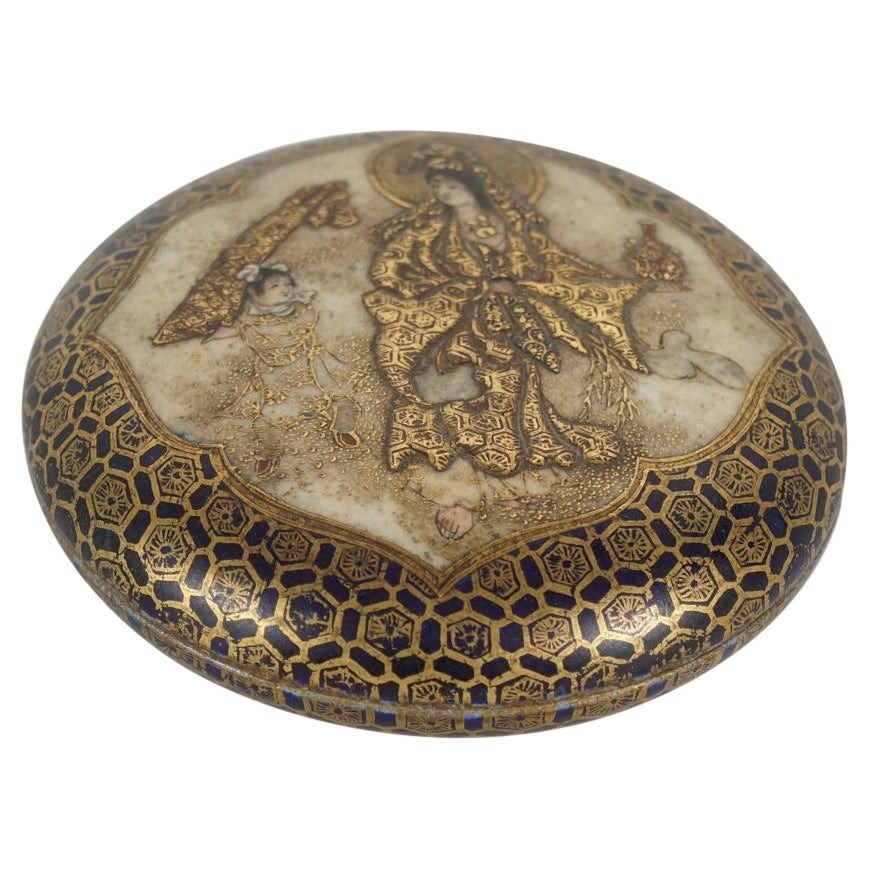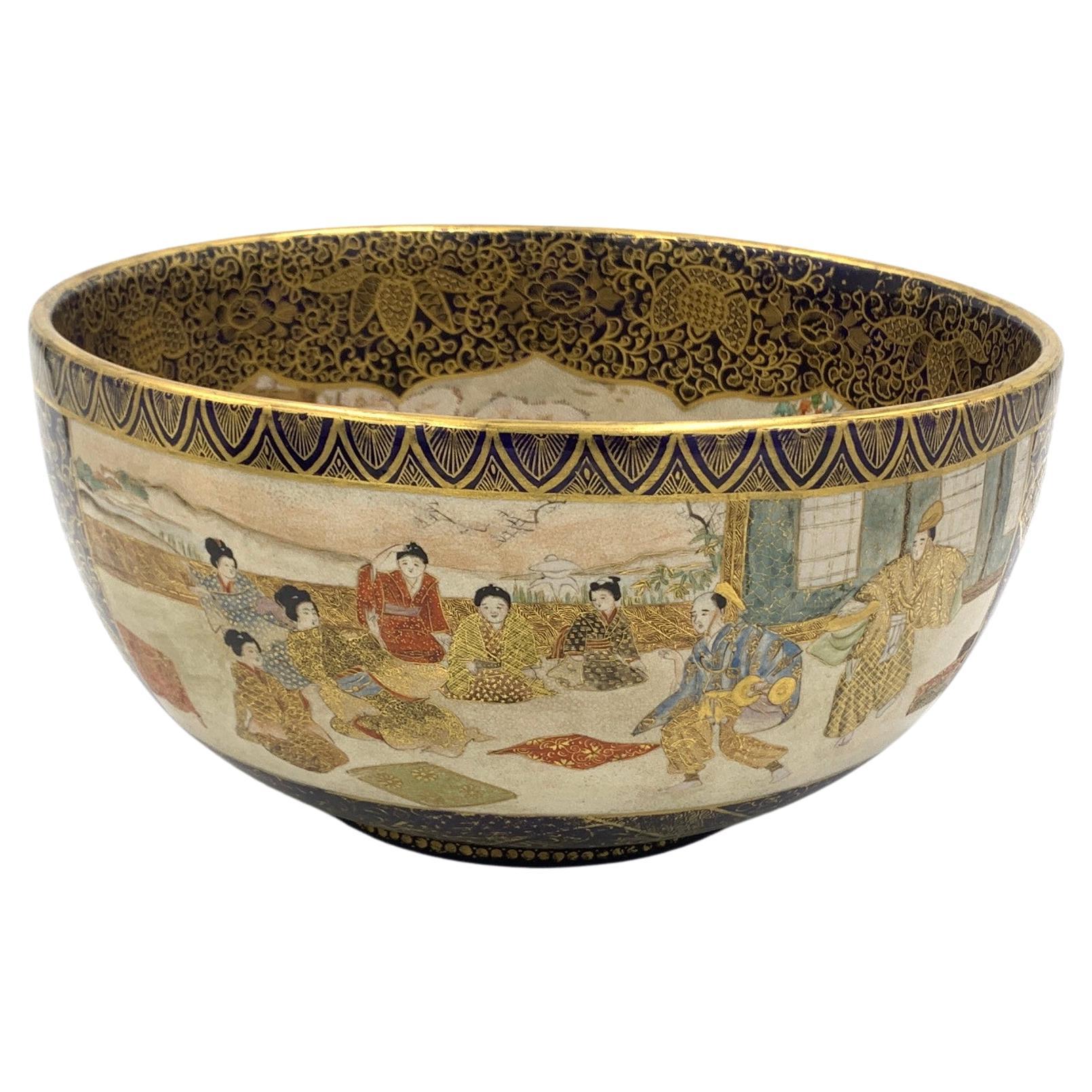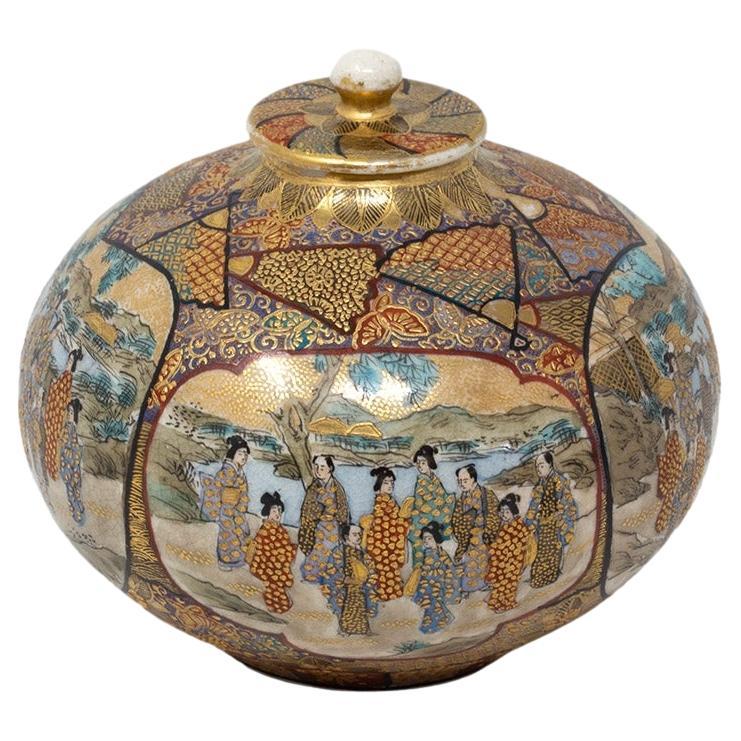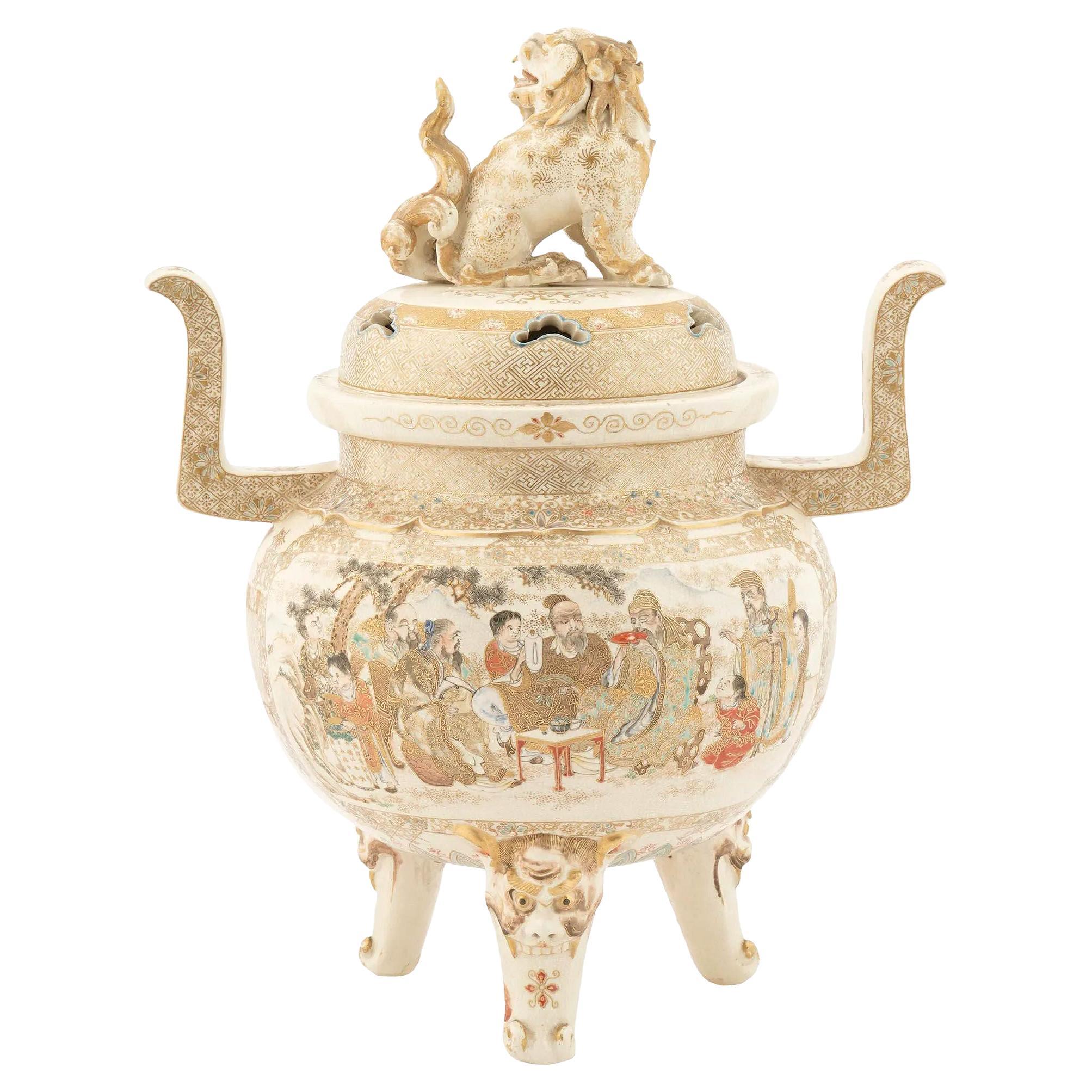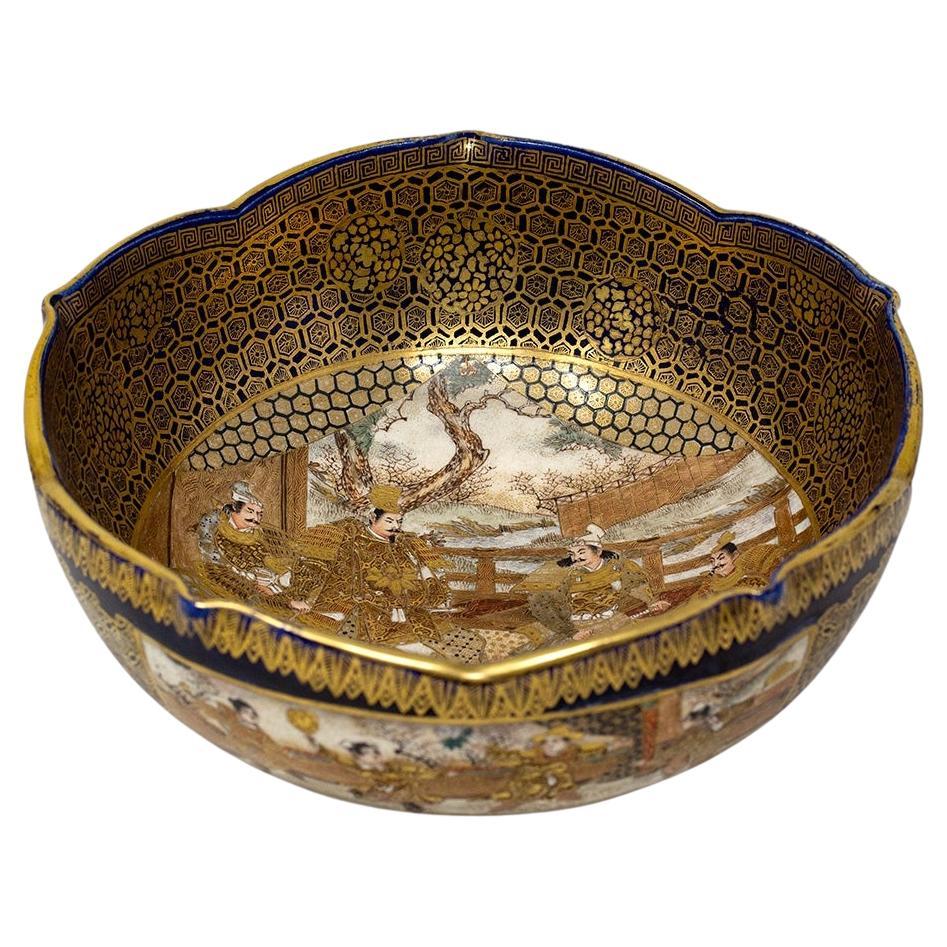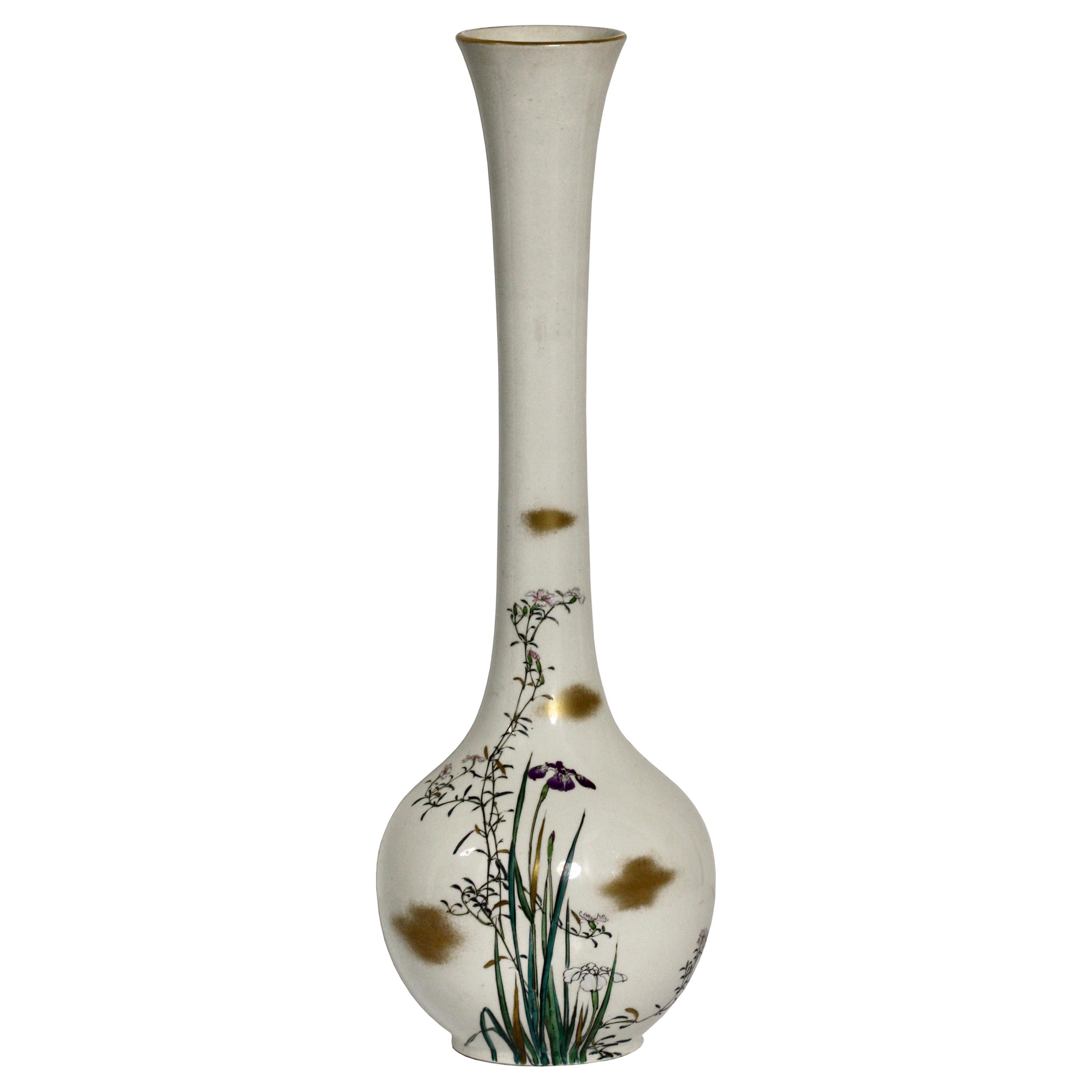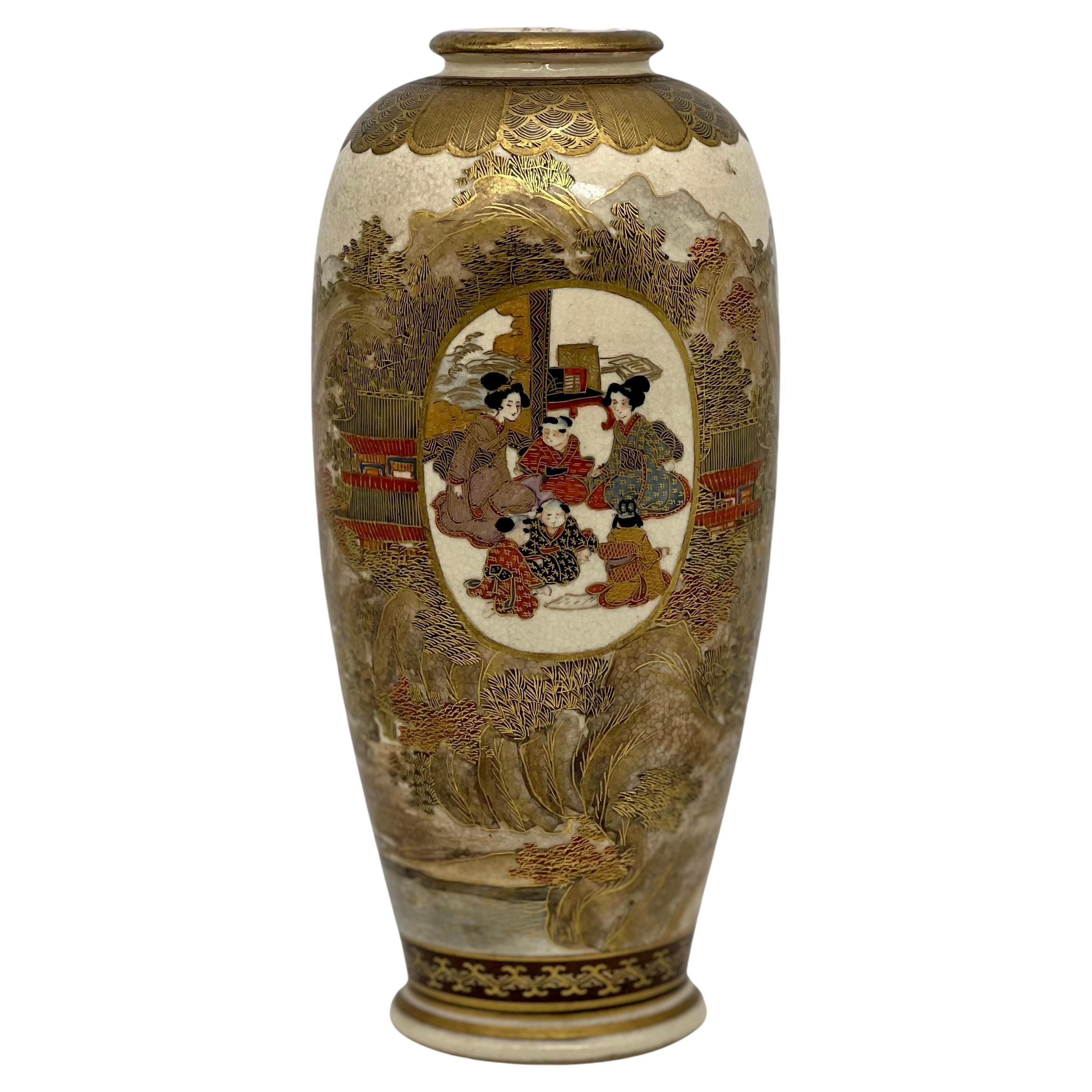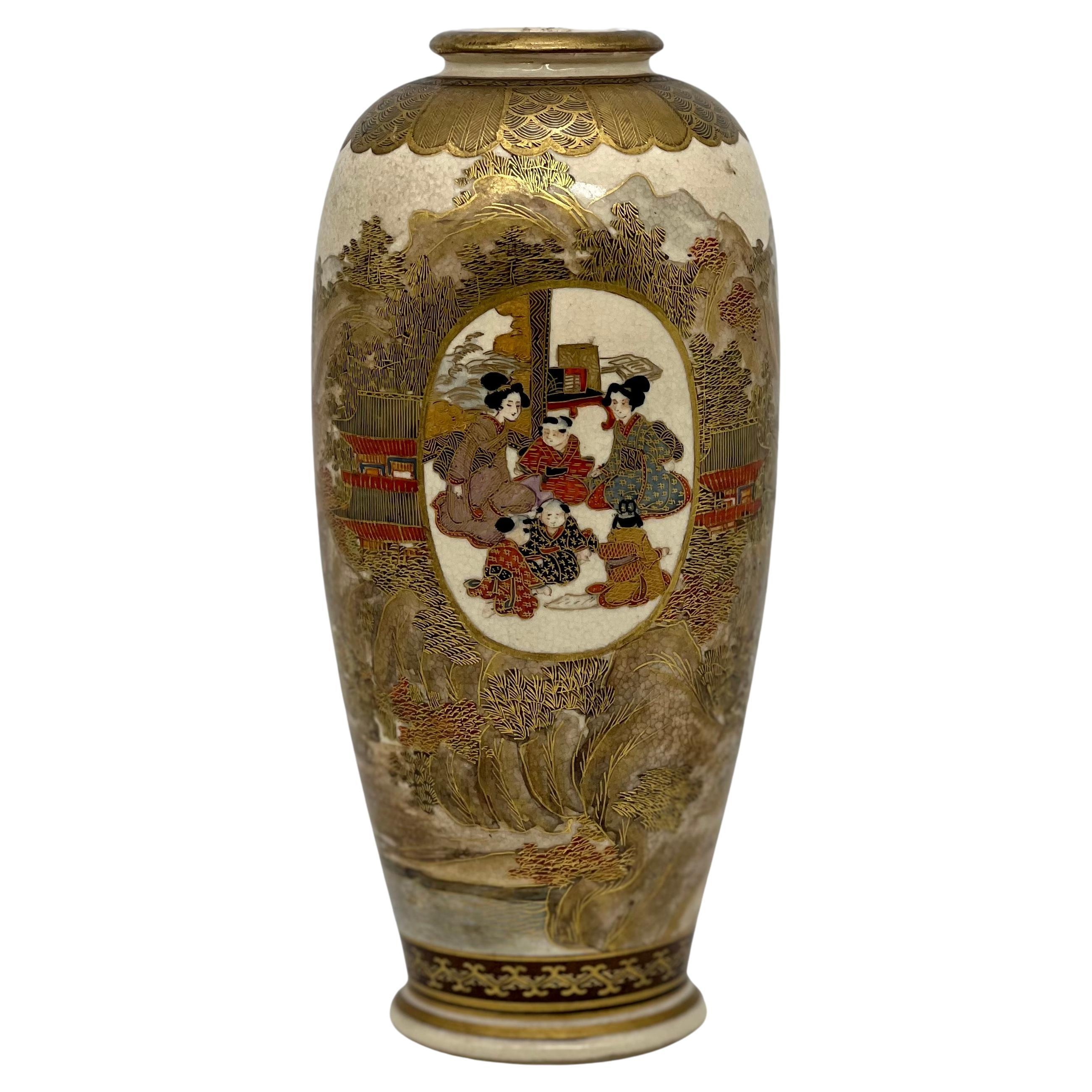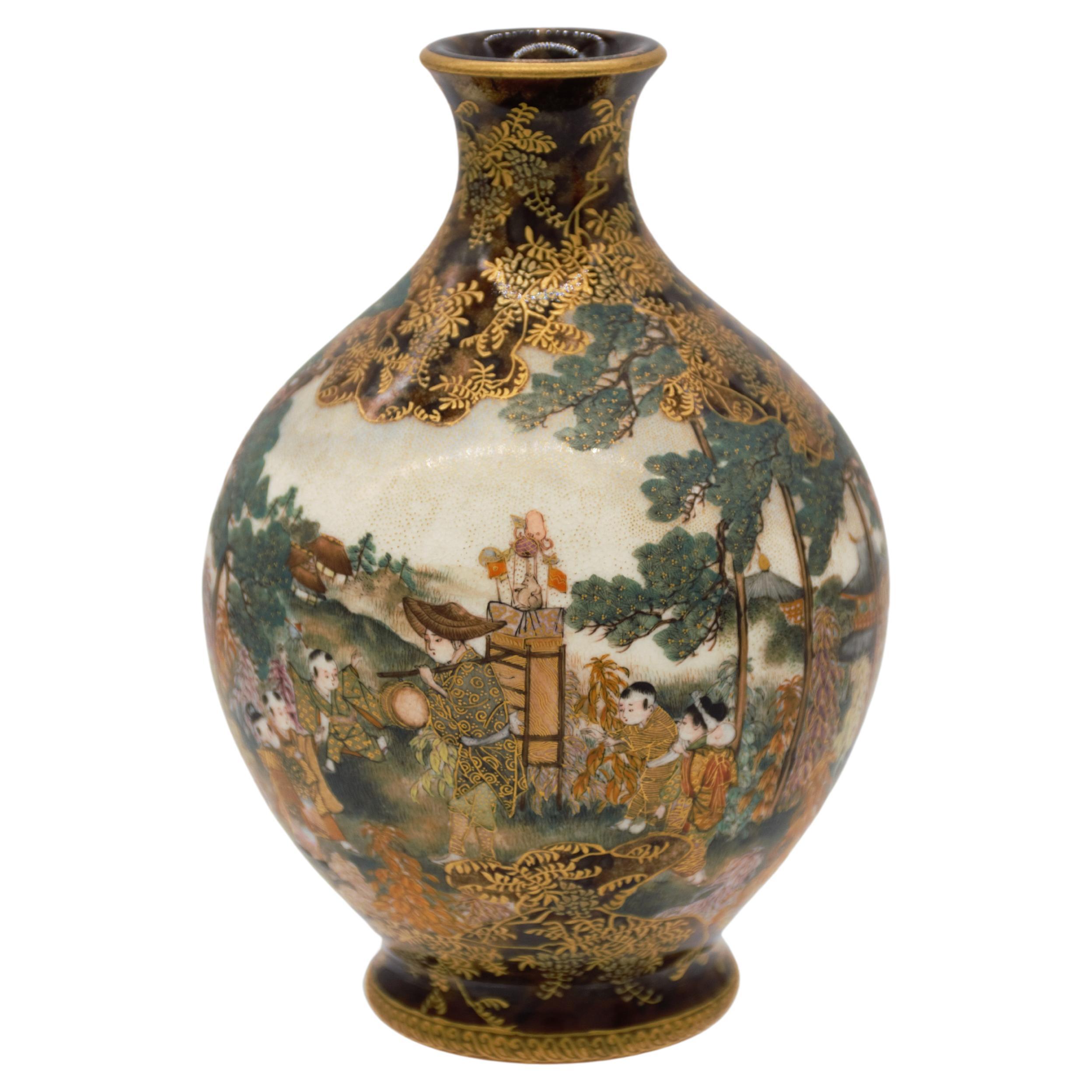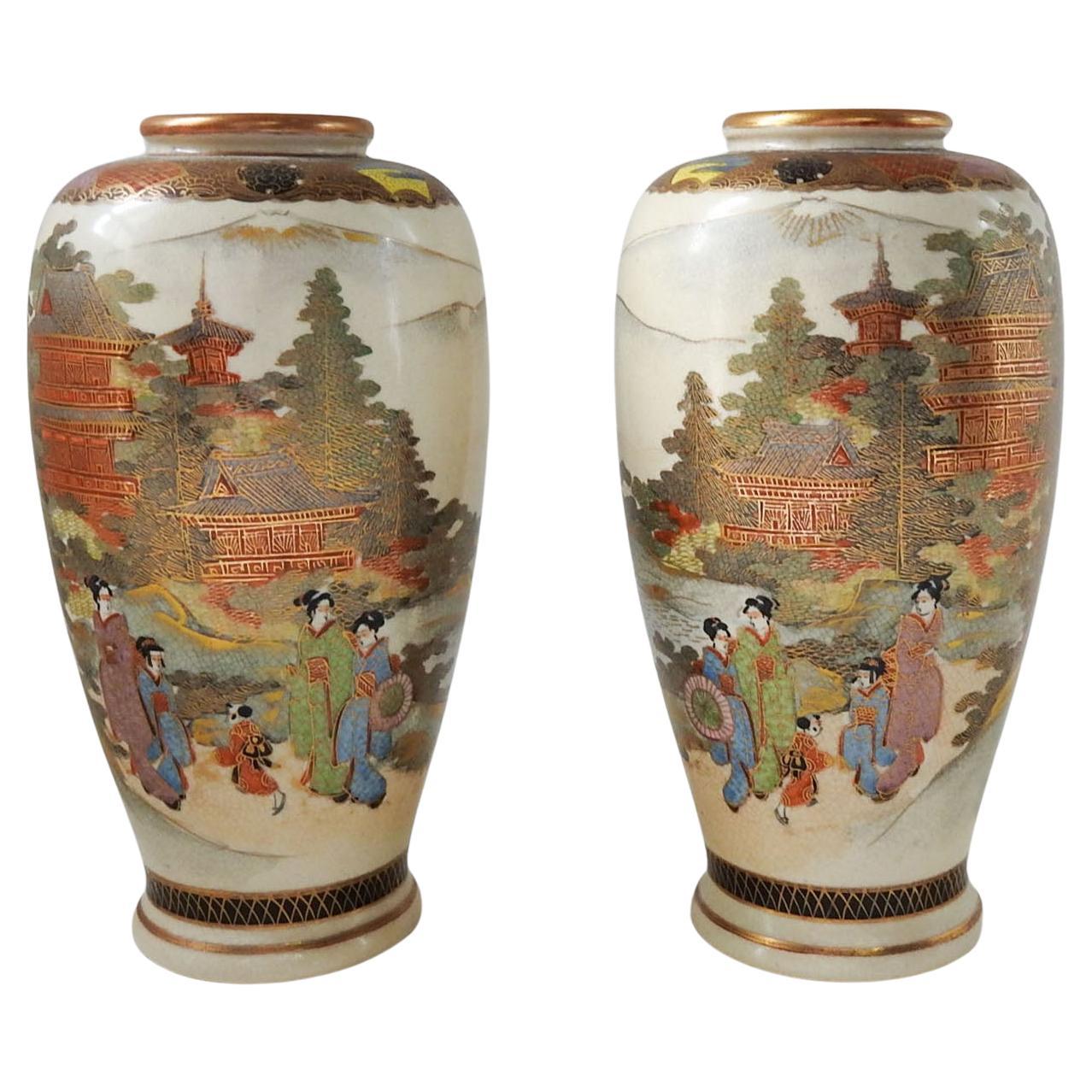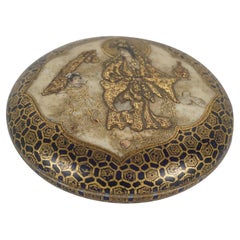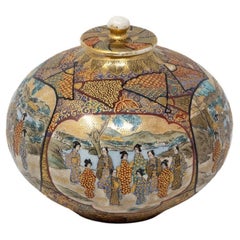
Meiji Period Satsuma Censor
View Similar Items
1 of 10
Meiji Period Satsuma Censor
About the Item
- Dimensions:Height: 17 in (43.18 cm)Width: 11 in (27.94 cm)Depth: 7 in (17.78 cm)
- Sold As:Set of 2
- Materials and Techniques:
- Place of Origin:
- Period:
- Date of Manufacture:1868-1912
- Condition:
- Seller Location:Santa Fe, NM
- Reference Number:1stDibs: LU189735747383
You May Also Like
- Meiji Period Satsuma Patch BoxLocated in Hudson, NYThis small detailed work made between 1890 and 1900 is skillfully painted representing a court lady in regal costumes being attended to by a small child carrying a bolt of silk cloth. This centered in a medallion where the raised decoration is heavily embellished with gold and patterned details. The round outer area is done in a cobalt blue with more goldwork designs and the interior of the box holds small painted objects as symbols of refinement and or beauty. The box is signed by the painter's hand but as yet we have not translated or matched it to a specific maker's work. Wares of this type are most often produced in the city of Kagoshima in Kyushu province during the Meiji period and reflects the export industry designed to cater to western tastes but not particularly bought by Japanese citizens. Patch boxes...Category
Antique Late 19th Century Japanese Ceramics
MaterialsCeramic
- Japanese Satsuma Bowl, Meiji PeriodLocated in London, GBSigned, Meiji period (late 19th century), Decorated in various coloured enamels and lavish gilt on a blue ground with panels containing samurai, ladies in kimono, the interior with a...Category
Antique Late 19th Century Japanese Ceramics
MaterialsPorcelain
$2,241 Sale Price20% Off - Japanese Meiji Period Satsuma KoroBy KinkozanLocated in Newark, EnglandBulbous Form From our Japanese collection, we are delighted to offer this Japanese Meiji Period Satsuma Koro. The Japanese Satsuma Koro of rounded form neatly potted with a small to...Category
Antique Early 1900s Japanese Meiji Ceramics
MaterialsCeramic, Earthenware, Pottery
- Meiji Period Diminutive Satsuma Baluster Vase.By SatsumaLocated in Vero Beach, FLMeiji Period Diminutive Satsuma Baluster Vase. This Japanese Satsuma vase from the late Meiji period is hand painted and gilt decorated with a Japanese landscape in exquisite detail...Category
20th Century Japanese Meiji Ceramics
MaterialsPorcelain
- Japanese Meiji Period Satsuma Tripod CenserLocated in New York, NYVery fine quality Japanese Meiji period Satsuma tripod censer with a foo dog finial. wonderful painting quality.Category
Antique Late 19th Century Japanese Meiji Ceramics
MaterialsCeramic
- Japanese Meiji Period Satsuma Bowl KinkozanBy KinkozanLocated in Newark, EnglandFrom our Japanese collection, we are delighted to offer this Japanese Meiji period Satsuma Bowl by Kinkozan. The earthenware bowl with pinched rim extensively decorated on both the exterior and interior. The bowl with a cobalt blue base glaze decorated to the borders with gilt shippo-tsunagi (linked-cash) with scattered medallion roundells. Around the exterior two elongated scenes are featured, one with boys playing games in a courtyard with the other featuring seated scholars in full dress both with raised enamel decoration. The interior features a central scene with Samurai warriors in training fully armoured with swords in a courtyard with landscapes scenes to the background. The central scene bordered by further stylised shippo-tsunagi type decoration with a greek key rim border. The bowl signed to the base Kinkozan dating to the Meiji Period (1868-1912) circa 1900. Shippo-Tsunagi (linked-cash) or seven treasures, is a traditional Japanese geometric pattern that combines four ellipses in a circle. These ellipses repeat outward to then create more circles, symbolising eternal peace and happiness. Kinkozan the Kinkozan family have been associated with pottery dating back to 1645. They went on to become the largest producer of Satsuma ware by one individual company, from the end of the 19th century until 1927 after which the factory closed. By the 1850s Kobayashi Sobei (1824-84), Kinkozan Sobei...Category
Antique Early 1900s Japanese Meiji Ceramics
MaterialsCeramic, Earthenware, Pottery, Faux Leather
Recently Viewed
View AllMore Ways To Browse
Blue Satsuma
Meiji Lion
Japanese Censor
Japanese Style Imari
Gold Imari Hand Painted Japan
Japanese Gold Imari Hand Painted
Blue And White Chinese Dynasty
19th Century Chinese Famille Rose
Contemporary Imari
Meiji Period Porcelain
Chinese Republic
Large Asian Plate
17th Century Japanese Art
Cherry China
Used Bats
Antique Satsuma
Satsuma Antique
Blue White Imari
